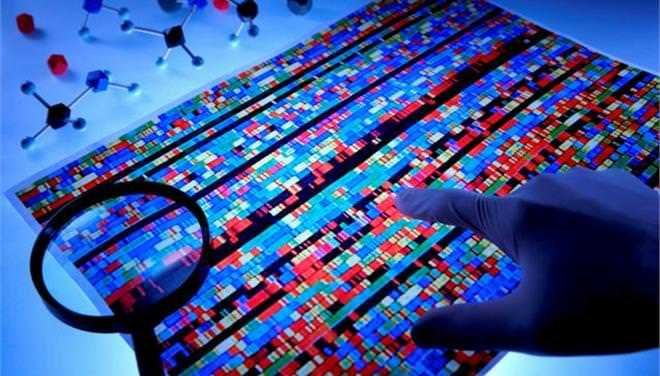Artificial genetic material (DNA) scientists have been able to build scientists in the US for the first time in history. But they did not stop there. While natural DNA includes only four letters of the "alphabet of life" (nucleotides), artificial includes six allowing it to make much more complex proteins, which are the building blocks of life. This development means that we will soon have new types of antibiotics, vaccines, cancer drugs, but also materials that do not even exist as an idea today. International financial analysts are quick to declare in the "Wall Street Journal" that with a clipboard calculation, the new drug market that will be created based on proteins and biological factors, in four years will have exceeded 165 billion dollars in turnover!
According to the study published yesterday in the scientific journal "Nature", scientists say they created the genetic material with two additional nucleotides compared to natural DNA. Inserting the artificial, expanded DNA was not an easy task, as a specialist had to be used procedure its integration into the microbe's cell, which also had some morbid effects on the cell. "Eventually the microbe cell recognized it as natural material," says biochemist Floyd Romesberg, who led the research team at the Scripps Research Institute at La Jolla University in California.
"Most people thought what we did was not possible," says biochemist Stephen Benner of the Institute for Applied Molecular Evolution in Gainesville, Florida. And this is because most scientists were sure that a normal cell would reject it amendment in its genetic material. "In this particular case, not only did it get placed inside the nucleus of the cell, but it started working normally. We can't say it wasn't shocking to us too. We didn't know there were so many chances of success," explains Dr. Benner.
The genetic instructions, that is, whether someone is born blond, with blue eyes, whether they will be predisposed to a certain disease and everything else we call hereditary, are written in detail in our DNA, which is located in the nucleus of each cell. This code is written with four chemicals (nucleotides) which are also called the "alphabet of life". They are Adenine (A) which has a chemical bond with thymine (T) and Guanine (G) which has a bond with cytosine (C). The combination of these pairs creates the molecular "recipes" for the creation of the amino acids and proteins necessary for life to exist.
With the ever increasing knowledge and improvement of computers, scientists can now intervene in the physical storage and information system of life that is not so well locked in every cell.
Today they can easily cut and splice normal DNA or parts of it to modify plants, bacteria and animals. In addition, they have already used this extremely small DNA storage unit to encode everything from books and poems to music, and have programmed DNA to perform calculations that a personal computers!
With the hope, therefore, to further exploit the potential of DNA, scientists focus on a relatively new field called synthetic biology. So, they are constantly investigating the development of an even wider genetic code that includes 12 bio-letters, something that has not yet been possible in a living organism that can be reproduced.
THE NEW METHOD. In the new achievement, experts have looked for molecules that would have the properties to integrate into the DNA molecule, in particular in the place of natural bases. These molecules should be able to form pairs with each other, as they form the physical bases in DNA double strand molecules.
After thousands of tests in the laboratory, they found two molecules, named d5SICS and dNaM, which met these conditions. Thus, they created synthetic DNA molecules (the plasmids) that contained the natural and artificial bases and introduced them into the E. coli bacterium. The bacterium, however, should be able to create copies of these DNA molecules, a process for which raw materials and specific enzymes are required. The raw materials (nucleotides with the d5SICS and dNaM molecules) were added as catalysts to the bacterial growth medium. Also, experts found that a protein derived from a single-celled organism could transfer these nucleotides to the DNA replication mechanism to place the enzymes in the right place and successfully complete the exercise.






